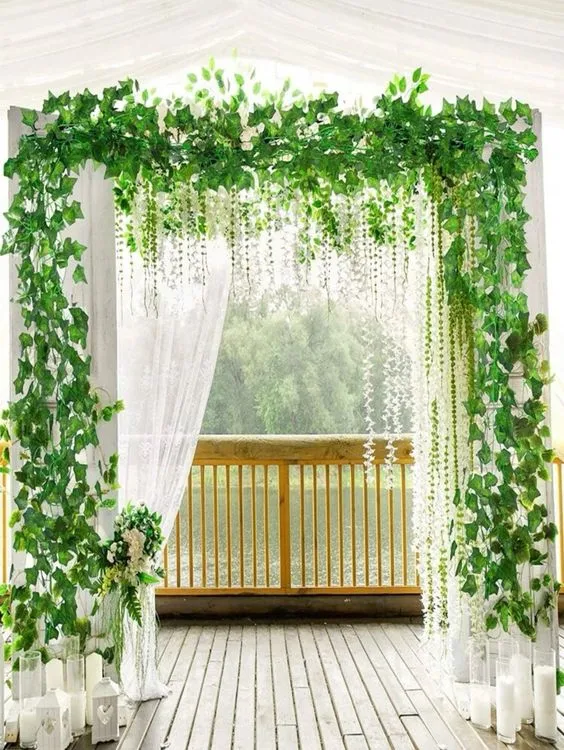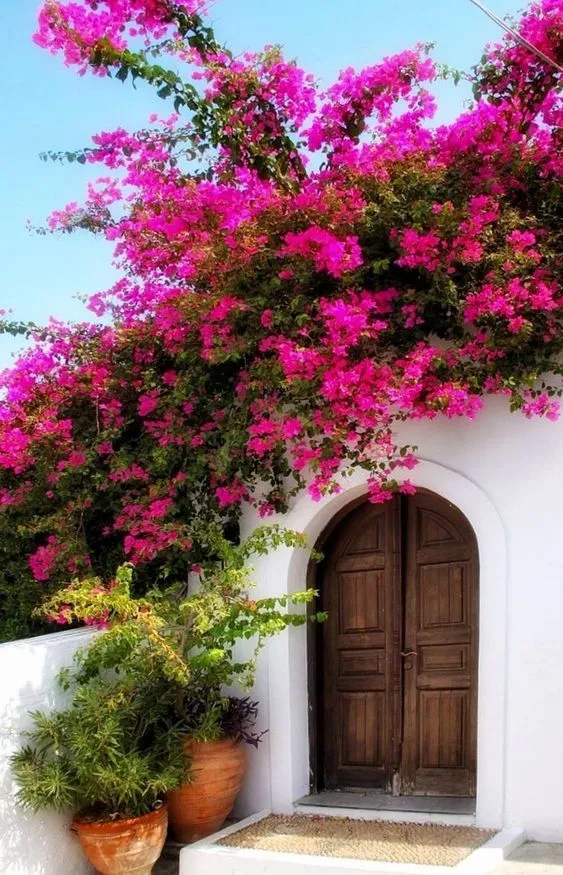The Fascinating World of Creeper Plants
Creeper plants, also known as climbing plants or vines, are nature’s way of adding vertical beauty to any space. These plants grow by using other structures for support, making them perfect for walls, trellises, fences, and even other plants. Creeper plants are a popular choice in gardens due to their ability to add visual interest and provide privacy. Let’s dive deeper into the world of creeper plants, exploring their benefits, types, and care.
Types of Creeper Plants
There are many different types of creeper plants, each with its unique charm and characteristics. Here are some of the most popular types:
Flowering Creepers
Flowering creepers are a favorite among gardeners for their vibrant blooms. These plants can transform any garden with their colorful flowers. Popular examples include Morning Glory, Bougainvillea, and Clematis, which cascade gracefully along fences and trellises.
Moss-like Creepers
Moss-like creepers are known for their delicate appearance. Plants like Irish Moss and Corsican Mint create lush, velvety green carpets that spread effortlessly over the ground, adding a touch of elegance to any garden.
Curtain Creepers
Curtain creepers create a stunning curtain-like effect when grown on walls or pergolas. Chinese Trumpet Vine and Honeysuckle are famous for their fragrant blossoms that attract hummingbirds, making them a delightful addition to any garden.
Rangoon Creepers
Rangoon creepers are known for their clusters of red, pink, or white flowers that change color as they mature. These evergreen vines are perfect for adorning fences and trellises, adding a splash of color to your garden.
Railway Creepers
As the name suggests, railway creepers often grow along railway tracks and embankments. The Mile-a-Minute plant and Japanese Hops are examples of fast-growing, hardy railway creepers that can quickly cover large areas.
Fruiting Creepers
Fruiting creepers are ideal for small gardens or balconies, offering both ornamental beauty and edible rewards. Strawberry plants, Kiwi vines, and passion fruit creepers are popular choices for those who want to enjoy fresh fruits right from their garden.
Potting Creepers
Potting creepers are perfect for container gardening. Creeping Jenny, Baby’s Tears, and Ivy are commonly used to create stunning hanging baskets and indoor greenery, adding a touch of nature to any space.
Examples of Popular Creeper Plants
Each variety of creeper plant has unique characteristics and benefits. Here are some of the most popular types:
Ivy
Ivy is one of the most common creeper plants. It has a distinctive leaf shape and can grow up to 30 meters. Ivy is ideal for covering walls, fences, and other vertical surfaces. Besides its aesthetic appeal, Ivy can help regulate temperature and reduce noise pollution.

Source: Pinterest
Jasmine
Jasmine is a fragrant creeper plant, popular for its sweet scent and delicate flowers. It can grow up to 6 meters and is ideal for growing on trellises or walls. Jasmine is also known for its medicinal properties and is used in traditional medicine to treat various ailments.

Source: Pinterest
Bougainvillaea
Bougainvillaea is a colorful creeper plant that produces bright flowers in shades of pink, red, orange, white, and purple. It can grow up to 12 meters and is ideal for growing on fences or walls. Bougainvillaea is known for its hardiness and ability to thrive in hot, dry climates.

Source: Pinterest
Wisteria
Wisteria is a stunning creeper plant that produces cascades of fragrant flowers in shades of purple, blue, and pink. It can grow up to 20 meters and is ideal for trellises or pergolas. Wisteria is known for its longevity, with some plants living for over 100 years.

Source: Pinterest
Climbing Roses
Climbing roses are a classic creeper plant that produces beautiful flowers in shades of red, pink, white, and yellow. They can grow up to 6 meters and are ideal for trellises or arches. Climbing roses are known for their thorns, which can help deter intruders.

Source: Pinterest
Creeper Plants: Benefits
Creeper plants offer a range of benefits for your home and garden. Here are some of the most notable benefits:
Improved Air Quality
Creeper plants can improve air quality by absorbing pollutants and producing oxygen. This can reduce respiratory problems and improve overall health.
Reduced Heat and Noise Pollution
Creeper plants can reduce heat and noise pollution by providing shade and insulation. This keeps your home or garden cool and quiet, even in hot and noisy environments.
Increased Privacy
Creeper plants can provide privacy by creating a natural barrier between your home and the outside world. This is especially useful in urban areas where space is limited.
Pest Control
Creeper plants can help with pest control by attracting beneficial insects that prey on harmful pests. For example, plants like honeysuckle and clematis attract ladybugs and lacewings, which feed on aphids and other pests.
Wildlife Habitat
Creeper plants provide a habitat for a variety of wildlife, including birds, bees, and butterflies. This helps promote biodiversity and create a more vibrant and diverse ecosystem.
How to Care for Creeper Plants
Creeper plants are relatively easy to care for, but they do require some maintenance to thrive. Here are some tips for caring for your creeper plants:
Watering
Creeper plants should be watered regularly, especially during hot and dry weather. However, be careful not to overwater them, as this can cause root rot and other problems.
Pruning
Creeper plants should be pruned regularly to control their growth and prevent them from becoming too invasive. Pruning can also help promote flowering and increase the overall health of the plant.
Support
Creeper plants need support to grow properly. This can be provided in the form of trellises, walls, or other structures. It’s important to ensure that the support is strong enough to hold the weight of the plant.
Fertilizer
Creeper plants should be fertilized regularly to promote healthy growth and flowering. However, avoid over-fertilizing them, as this can damage the plant.
Conclusion
Creeper plants are a versatile and beautiful addition to any garden or home. With their ability to add visual interest, provide privacy, and offer numerous benefits, it’s no wonder they are a popular choice among gardeners. By understanding the different types of creeper plants and how to care for them, you can create a stunning and thriving garden that will be the envy of your neighborhood. So, why not add a touch of nature to your space with these amazing plants?
